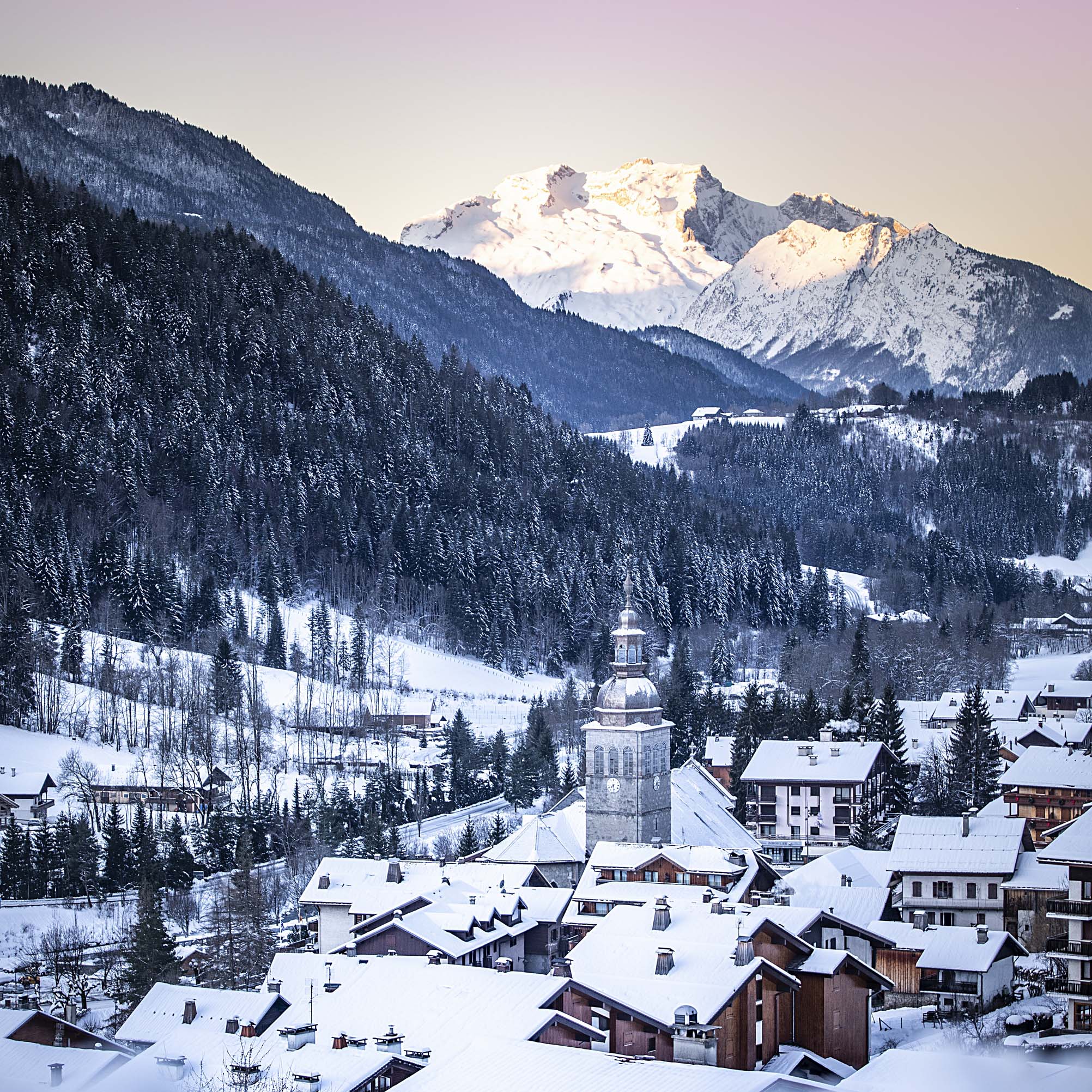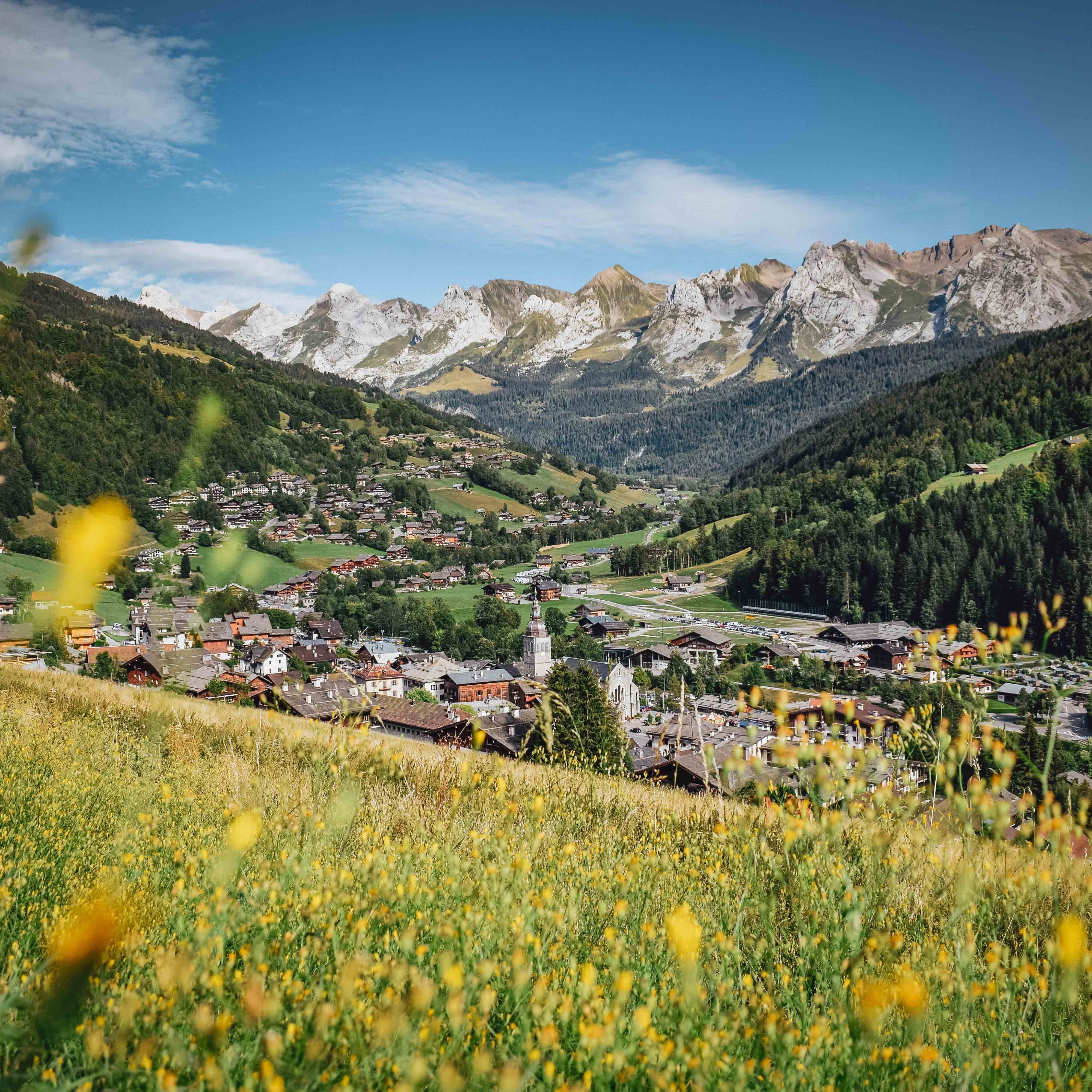Le Grand-Bornand Sustainable Face with Yannis Nacef
YANNIS NACEF
Etudiant en deuxième année de Master Géosphères (recherche en géographie) à l’Université Savoie Mont Blanc. A notamment travaillé sur les arbres remarquables des Alpes du Nord comme symbolique villageoise et sur la patrimonialisation et la réhabilitation des hameaux abandonnés savoyards.

"THE SUSTAINABILITY OF THE MOUNTAIN VILLAGE COULD TAKE THE FORM OF WHAT HAS MANAGED TO ENDURE AND ABOVE ALL TO RENEW ITSELF"
For a long time, the village was considered a timeless element. While this model, reflecting the structuring of the mountain habitat, seemed to be durable during the last century, the transformation of society has profoundly challenged this established order. The mountain village in the Northern Alps is made up of a main town often centered around a bell tower (P. Vidal de la Blache, 1903)-1 to which is added a nebula of hamlets (F. Braudel, 1986)-2 which, for Albert Demangeon (1927)-3 represents the grouping in the dispersion. But more broadly speaking, these built entities participate in the structuring of a village space initially turned towards the food-producing dimension, thus ensuring the needs of its population.
However, the twentieth century proved to be a real social, spatial and temporal rupture which for many mountain villages took the form of a rural exodus. These upheavals led in some places to the total abandonment of a hamlet, and in others to the disappearance of many towns. However, in spite of these ruptures, "the village" survived and it is more largely its durability which succeeded, not without difficulty, in maintaining itself. This notion of durability which concerns us can quite naturally be defined by what lasts. Nevertheless, the homogeneous, perfect duration, without shadow can prove to be utopian. Thus, the sustainability of the mountain village could take the form of what has managed to last and, above all, to renew itself. So, it is possible to ask ourselves how the transformation of the mountain village has ensured a renewed sustainability of these living entities?
In fact, faced with the evolution of the model of society, the village has necessarily had to adapt and transform itself in order to survive and take on the image and form that we know today. These transformations are multiple. First of all, there is a transformation of the use of the place because the initial dominant use, which can be qualified as original, centered on a permanent habitat linked to the work of the earth, has totally disappeared, replaced by a habitat shared between the permanent residential, the secondary, the place of holiday and the strongly developed tourist. In addition, there has been a structural transformation of the village's physiognomy, where different generations of buildings no longer have the weathered patina of age (R. Macaulay, 1964)-4 and where swimming pools, terraces and tennis courts have replaced the barns, stables and farmland of the past. These modifications contribute to the diffusion of an image of the village based on the model of the villagization of Switzerland (B. Crettaz, 1993)5 or of the Austrian Tyrol, highlighting an architecture centered on stone houses and other wooden chalets, as seen for example in the communes of Megève or Bonneval-sur-Arc. This evolution of the image is linked to a profound transformation, that of the perceptions allowed in particular by the renewal of generations.
In short, Le Grand-Bornand is fully involved in this transformation of the village, which in fact participates in maintaining this multitude of village entities through a renewal that has been, it must be admitted, the salutary element that ensures the sustainability of the mountain village.
However, the twentieth century proved to be a real social, spatial and temporal rupture which for many mountain villages took the form of a rural exodus. These upheavals led in some places to the total abandonment of a hamlet, and in others to the disappearance of many towns. However, in spite of these ruptures, "the village" survived and it is more largely its durability which succeeded, not without difficulty, in maintaining itself. This notion of durability which concerns us can quite naturally be defined by what lasts. Nevertheless, the homogeneous, perfect duration, without shadow can prove to be utopian. Thus, the sustainability of the mountain village could take the form of what has managed to last and, above all, to renew itself. So, it is possible to ask ourselves how the transformation of the mountain village has ensured a renewed sustainability of these living entities?
In fact, faced with the evolution of the model of society, the village has necessarily had to adapt and transform itself in order to survive and take on the image and form that we know today. These transformations are multiple. First of all, there is a transformation of the use of the place because the initial dominant use, which can be qualified as original, centered on a permanent habitat linked to the work of the earth, has totally disappeared, replaced by a habitat shared between the permanent residential, the secondary, the place of holiday and the strongly developed tourist. In addition, there has been a structural transformation of the village's physiognomy, where different generations of buildings no longer have the weathered patina of age (R. Macaulay, 1964)-4 and where swimming pools, terraces and tennis courts have replaced the barns, stables and farmland of the past. These modifications contribute to the diffusion of an image of the village based on the model of the villagization of Switzerland (B. Crettaz, 1993)5 or of the Austrian Tyrol, highlighting an architecture centered on stone houses and other wooden chalets, as seen for example in the communes of Megève or Bonneval-sur-Arc. This evolution of the image is linked to a profound transformation, that of the perceptions allowed in particular by the renewal of generations.
In short, Le Grand-Bornand is fully involved in this transformation of the village, which in fact participates in maintaining this multitude of village entities through a renewal that has been, it must be admitted, the salutary element that ensures the sustainability of the mountain village.
1 P. Vidal de la Blache, 1903, Tableau de la géographie de la France, Hachette.
2 F. Braudel, 1986, L'identité de la France. Espace et histoire tome 1, Flammarion.
3 A. Demangeon, 1927, "La géographie de l'habitat rural", Annales de Géographie.
4 R. Macaulay, 1964, A note on new ruins, Edition Brian Dillon London.
5 B. Crettaz, 1993, La beauté du reste. Confession of a museum curator on the perfection and confinement of Switzerland and the Alps, Edition Zoé.
2 F. Braudel, 1986, L'identité de la France. Espace et histoire tome 1, Flammarion.
3 A. Demangeon, 1927, "La géographie de l'habitat rural", Annales de Géographie.
4 R. Macaulay, 1964, A note on new ruins, Edition Brian Dillon London.
5 B. Crettaz, 1993, La beauté du reste. Confession of a museum curator on the perfection and confinement of Switzerland and the Alps, Edition Zoé.


